Category Archives: Uncategorized
The Colour Red – or the Quest for LMS Crimson Lake
A topic that comes around from time to time, including to my lips, is what colour exactly is Crimson Lake? I thought that my analysis and that of others that have contributed to the discussions were worth sharing more widely; so here goes……….
The Historical Context
The first good insight I have is from George Dow who was a prolific author of the 1960s and 1970s, including on liveries who wrote in the Railway Modeller in 1973:
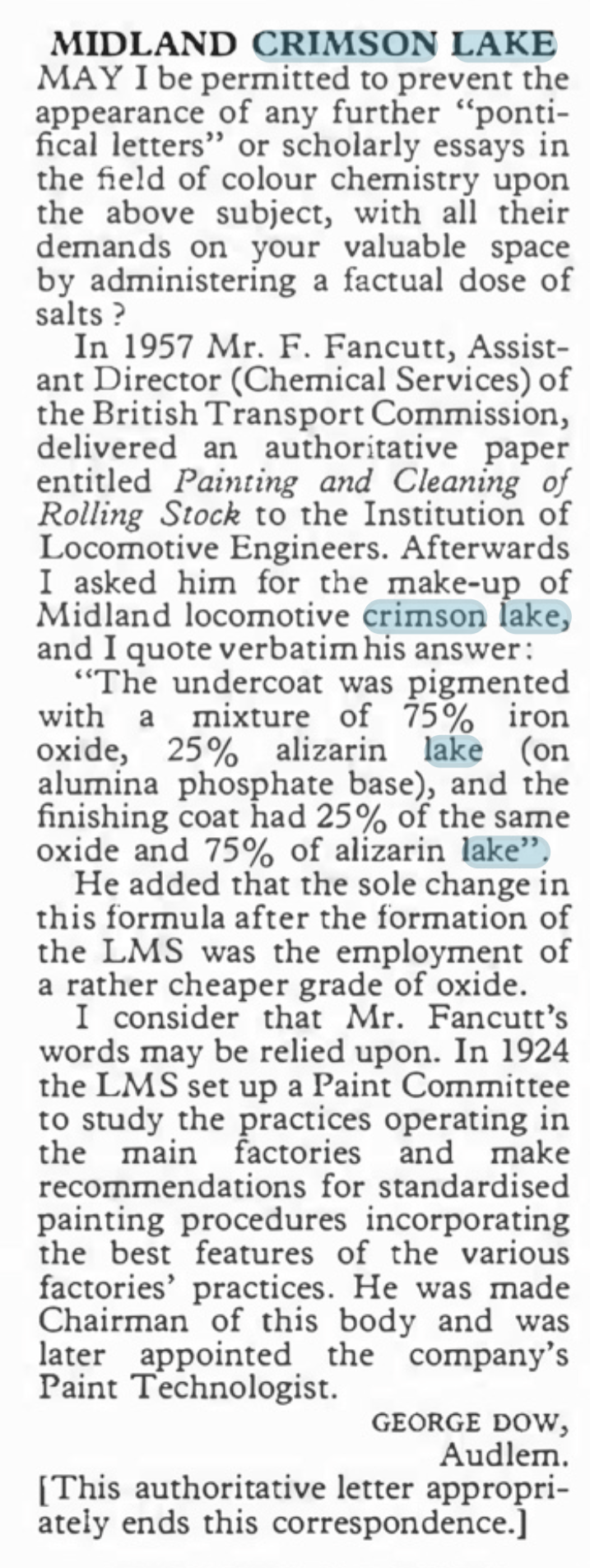
However authorative this is, fifty years later, with the change from natural to synthetic pigments this is not of great help. Also B&Q do not stock alizarin lake last time I looked as it is a pigment produced from a complicated processing of a vegetable and is probably fairly inconsistant anyway. https://www.winsornewton.com/row/articles/colours/spotlight-on-ruby-madder-alizarin/).
The Problem With Reds
Many years ago, when I was still in my shorts, I worked in a printing ink manufacturering business and red was one of our bugbears. This was for three reasons; as a colour it is less opaque than many colours so were prone to poor coverage, it is also prone to fading and like all paints, it is affected by the surface treatments, in our case varnishes. All of these issues affect how Crimson Lake appears on both the prototype and our models.
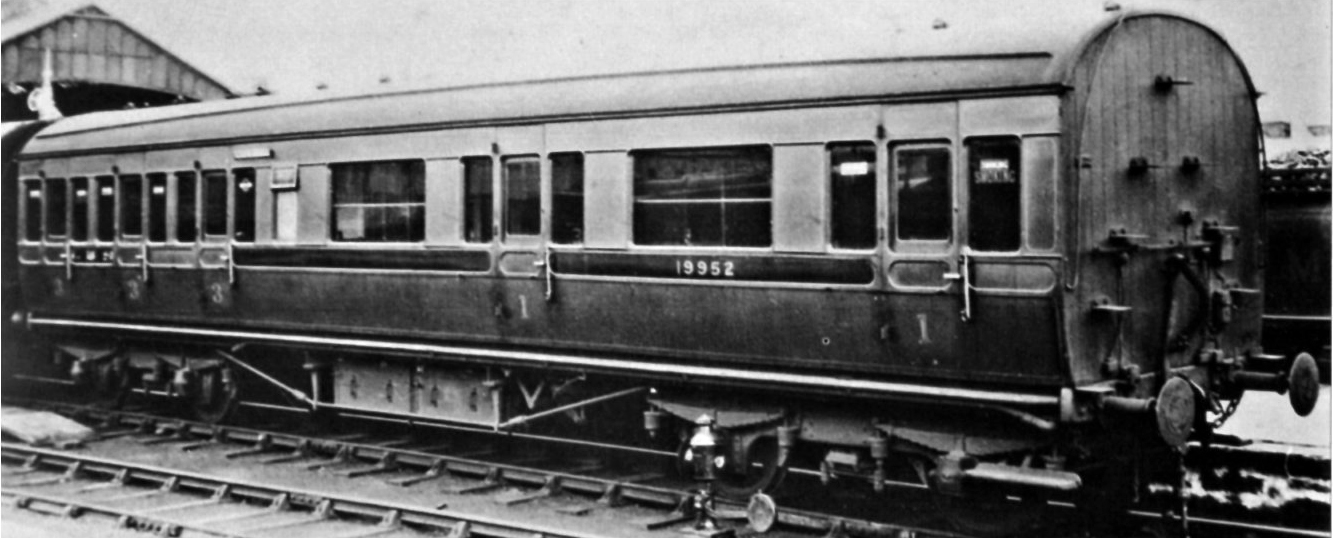
A Caledonian diagram 106 non-corridor composite shortly after being renumbered to 19952. This appears to have been acheived by painting over the predecessor number and then the application of the fresh number and then varnishing. The patches that have been so treated stare at you somewhat and ilustrate how the paint and lustre deteriorate! Photo by H.R. Norman ref 6081 and now in the NRM
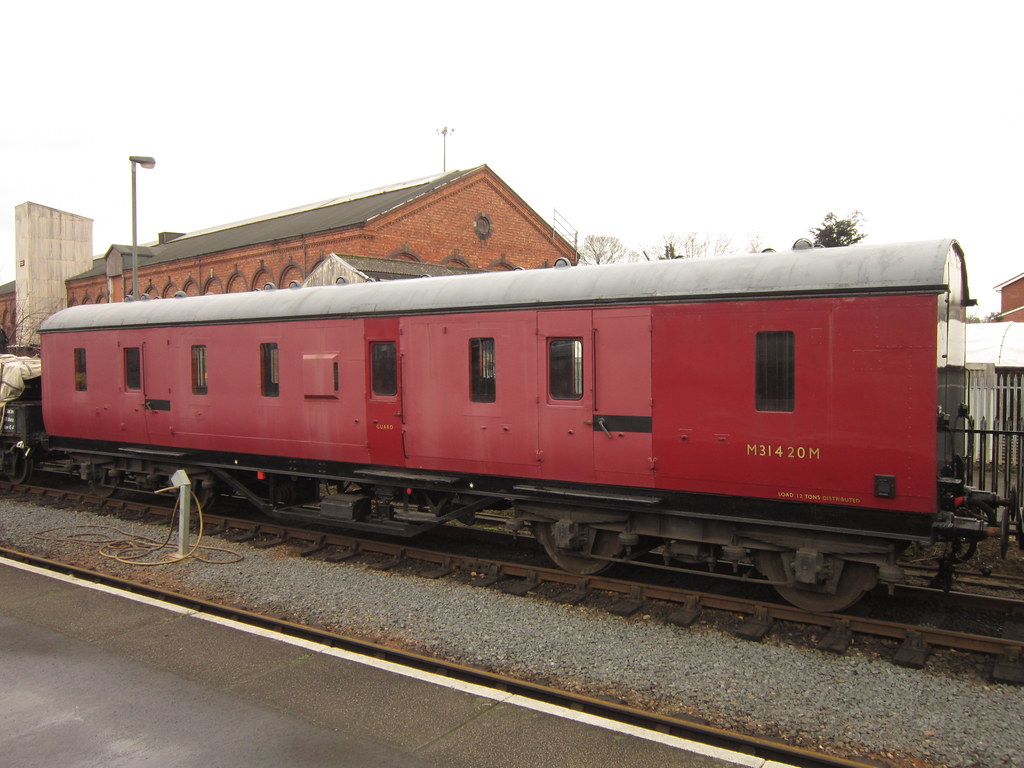
Its still a problem now too as this diagram 2171 full brake at Kidderminister shows. Photo SVR Enthusiast via Flickr

Both of these coaches have been painted in the same top coat, Precision Paints LMS Crimson Lake. The top coach, the clerstorey, followed the paint sequence noted by George Dow above – a first undercoat of LMS wagon grey, followed in turn by 75% grey, 25% crimson; 50% each; 25% grey, 75% crimson and finally 100% crimson. On the lower coach, the crimson was neat and painted over an undercoat of LNER bauxite. Both were painted at the same time, in otherwise the same manner and in both cases they were varnished but not weathered. The difference is startling! Photo and models by John Hastings Thompson.
Does Colour Scale
Like weight, I am not convinced that colour scales or perhaps it does but given that our models are smaller than the prototype it is more heavily heavily by contrast. I am sure we all know about the optical illusion causing the viewer to read differnt colours of the same sample by virtue of the background – is this happening to us as we perceive the colour of a model? Try the sampel from the Exploratoium below:

The presence of lining is also a major influence of the feel of the colour. The gold and black of the LMS seems to add a bit of sparkle and depth of colour to the red.
It was a Long Time Ago
We must also remember that the last LMS crimson lake locomotive or coach will have been repainted seventy years ago and even the last BR maroon loco was withdrawn sixty years ago (plus there is the argument as to whether they realy were the same colour as well!). Whose memory of colour is good enough to survive this long? Even photographs from this era as a whole cannot be relied upon due to the variability of colour rendition, the nature of the light that the subject was recorded in or the level of contrast with its surrounding – none of these issues have gone away with modern digital photographs!
I for one have never seen either original colour and my view of what crimson lake is being based on the preserved locomotives that I have seen over my life. Have the preservationist got it right? Maybe they are better informed than you or but if this was true, why is there so much variation in the colour from the ready to run manufacturers or even the paint manufactuers?
However, whether they are right or not, the preservation scene has set my expectation of what the right colour is and I suspect the same would be true for all of us. Whilst I hate making modelling decisions on any history which is not real, I have reached the conclusion that the right colour for me is one that matches what I have seen in the UK preservation scene.
Where does this leave us?
Possibly the first conclusion is that there are a wide variety of reds that we can safely consider to be correct for Crimson Lake – phew, because when I look at my models I do have variences!
The second conclusion is not only is some inconsistancy acceptable, it is actually essential because red faded so noticeably. I am less convinced that the changing of hues seen across some colours but a toning down of the colour and tinging to a more matt colour is definitely prototypical.
In my personal quest for a colour I have been through multiple agonies to get the right colour. Thirty years ago, it was Precision Paints Crimson Lake but this seemed (to me anyway) change and become too purple over time. I then used Rover Damesk Red from a rattle can but found this too uncontrolable or, if I held it further from the model prone to to giving the orange peel effect. I was then put on to the solution to all our colour problems by Jim Smellie (of Caley Coaches).
This suggestion was to use the colour that the preservation industry generally use to source paint for the 12 inch to the foot models. This comes from Craftsmaster paint who have a series of specialist railway colours for most of the colours that we will wish to use. I use a numberof their colours including Crimson Lake. I have yet to adulterate this but i do intend to let it down with some white to imitate fading – hopefully this will not send me down another quest for the right faded Crimson Lake!

Portchullin to Support Sutton’s Locomotive Works Class 25 Launch
Firstly I must apologise for such a long gap since my last post. As with many people, life, house moves, house extensions and children have got in the way a bit. So much so, I have to admit that I struggled a touch remembering how to log into my own blog!!
I have not been totally idle in the meantime and I do have things to show on the blog but first is an announcement of Portchullin’s next outing. It has been a long time since it has been out but there was a bit of a global pandemic that was largely to blame for this! This invite is a little different in that it is not a general model railway show but instead is to support a launch event for the Sutton Locomotive Work’s impending Sulzer class 25. This will take place in Crewe over the three days of Friday 29th Sept to Sunday 1st Oct, 2023.

In addition to seeing Portchullin, there will be two other excellent layouts there. The epic Mostyn from the Barrowmore Club and Underhill Yard by Dave Roome. The SLW team will be there too, along with the first production samples of thier new class 25 model.
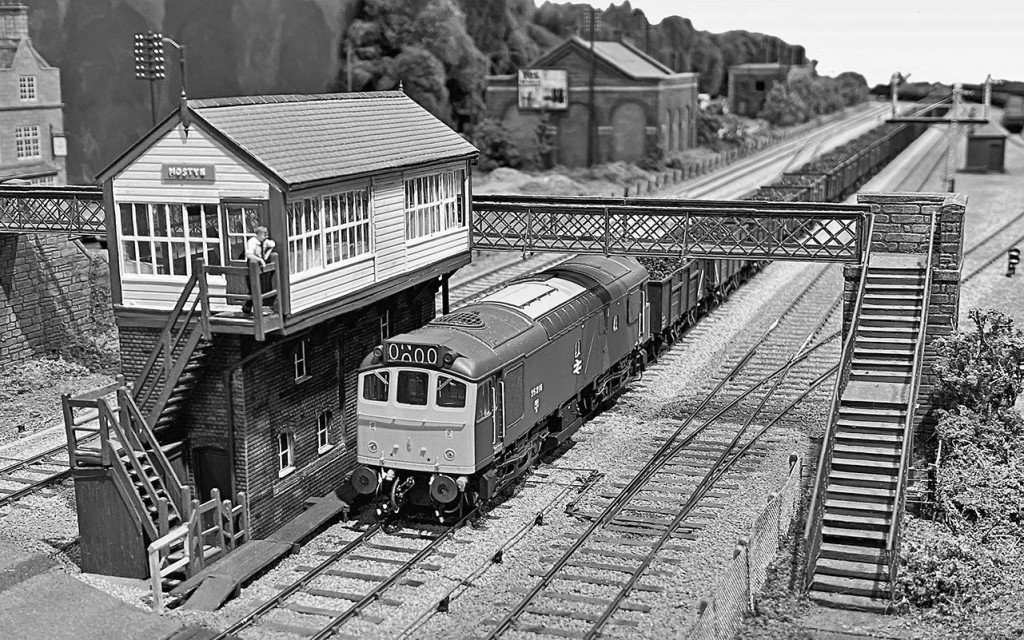
Mostyn
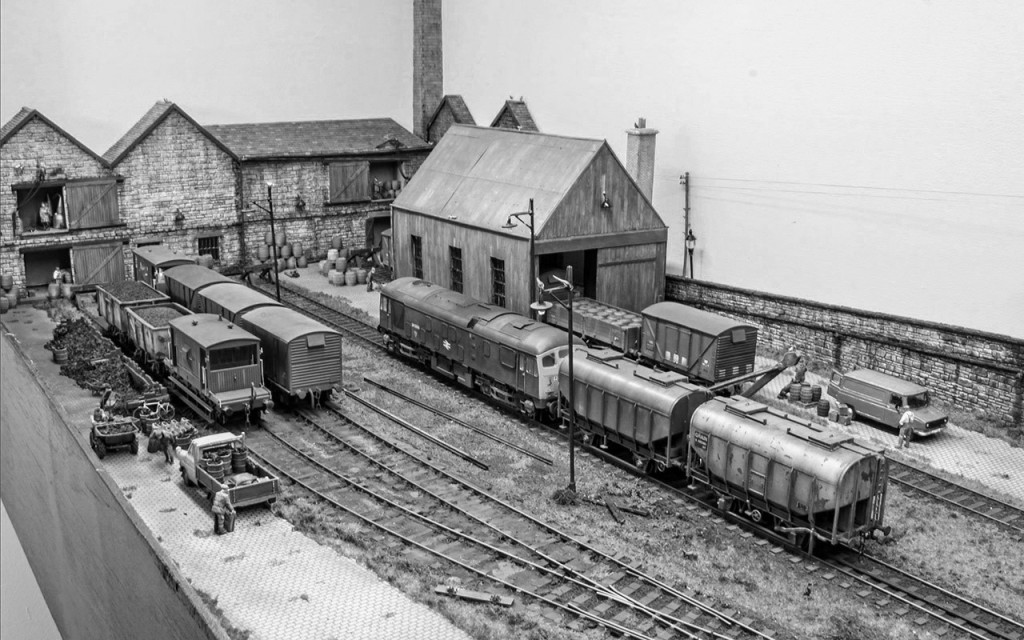
Underhill Yard
The event is for the customers of Sutton’s Locomotive Works and other selected guests that might be interest in good medelling and sulzer locomotives more generally. In this regard, if you are reading this blog you do count as a selected guest so are welcome to attend. However, please note that you need to book a visit and to ensure that the event is more relaxed than the average show.
Details of how to book can be found on the note of the show on the Scalefour Forum.
The Polytechnic Special Excursion Train
From time to time, I see photographs that are intriguing or catch the imagination. This week generated one such example that I felt was worth sharing. In addition to being a rather wonderful timepiece of Edwardian travel, this view of a Highland Railway series 1 castle on the viaduct at Killiecrankie prompts a number of interesting discussion points.
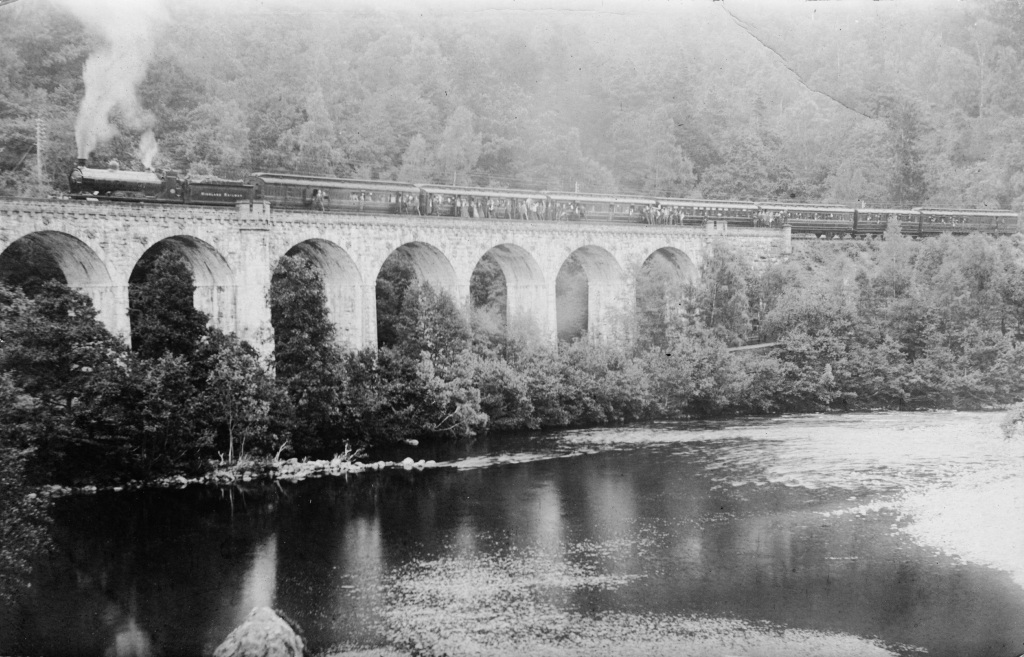
Dealing with the purely railway one first; the constitution of the train. This is largely made up of East Coast Joint Stock coaches from the early part of the last century, supplemented by a Great Northern dining car and one NER coach. The East Coast Joint Stock Co was a joint undertaking of the three companies that made up the east coast route from Kings Cross to Scotland to provide coaching stock that could run across three company’s lines. Back in 2016, I showed my part build of a very similar coach to those on the viaduct for you to compare. By the way, before long there will be a further instalment in this series, as I have made progress with it and have a pretty much finished coach.
What initially surprised me was that all of the stock was third class; which was very unusual for trains of this time when railway travel was proportionally much more expensive and thus attracted the “monied classes” rather more than today. My colleagues in the Highland Railway Society of course not only had the answer for this but there was even an article on it in their journal a few years back written by John Roake. The train is obviously a special rather than a day to day timetabled service and it transpires that it was one of a series organised by the Polytechnic Touring Association in the beginning of the 20th century. This organisation had its origins as a travel society of the Regent Street Polytechnic (which has developed into the University of Westminster) who arranged tours within the UK, Europe and further afield for its students before subsequently becoming and independent business in its own right. In time, it became a fully fledged travel business and once it had merged with a firm called Sir Henry Lunn Ltd, became a household name to people of my generation – Lunn Poly (now part of Tui).
From around 1901 rail tours of the Scottish highlands were organised in specially commissioned services across the summer season. These were advertised as “a week in bonny Scotland for three guineas“. This was equivalent to a month’s average wage at the time, so even though the service was not in luxurious first class, it was hardly for the masses either. This is rather evidenced by the finery of both the ladies and gentlemen that are visible in the picture. The tour visited a number of Scottish beauty spots, often combined with a steamer trip to complete a round circuit or, as in this case a walk through the scenery to Dunkeld. Dunkeld is 16 miles from Killiecrankie, so they got a fair share of exercise!
The picture is a posed shot and is likely to be an official view for publicity purposes and what caught my eye was the participants standing on the viaduct’s parapet. The viaduct is 54 feet high, so these people are standing about seven stories up on an ledge that is a foot or so wide! Can you imagine the health and safety police sanctioning that now? Mind you, when you look closely at the picture you can see that many of them are leaning gingerly back on the carriage stock – so it appears that they were not oblivious of the fall!
And to sign off, this is an image from about the same place approximately 80 years later in July 1985; a class 47 on what is probably the northbound Clansman service from London Euston (photo by Eastwood 4117). The trees have gown up somewhat in the intervening years – as they have since, the view is largely obscured now but the walk along the river is still worthwhile if you are in the area.
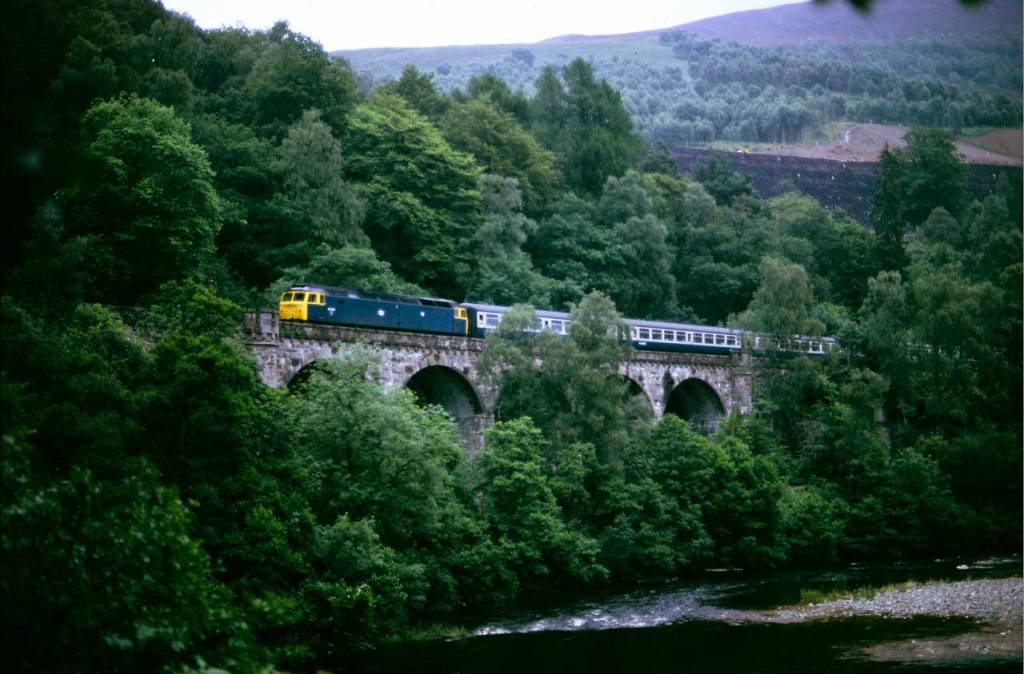
Normal Modelling Will Resume Soon…..

Sorry for the absence of any posts for rather a long time………..
We decided to move house, for a few reasons (a pleasant side effect of which is I can build myself a larger railway room) and this has been nearly all consuming for a few months. We are now moved and whilst we remain surrounded by boxes, normality is slowly returning to our life.
So some modelling posts soon, but first a summer holiday!
What did you do during the war grandad?
This post is a bit of an apology because I have been so quiet on here of late………
I do have my excuses though; related to the Covid pandemic none of us are enjoying. I have been pretty busy at work dealing with these places – the Nightingale Hospitals. I am not encouraged to say too much, especially given as I write this the pandemic is clearly getting a grip of the country and world again. I can say that so far, I have been inside five of the seven of them and I expect to see at least one more. Just to ensure I know what it is like for the hospital’s customers, I also decided to get a dose of the virus (with many thanks to the kids at my local school passing it to my wife).

So in the future when I have grandkids on my knee (not too soon please kids……….!) asking me what did I do in the 2020/21 covid war, I have something to say!
I have also allowed myself to go off in a tangent a little, as I have had a crack at a Thompson full brake. This was produced during WW2 when shortages of materials meant that they were built with teal planks rather than either teak or steel panels. The sides are flat without a tumblehomes and were unlike anything else on the LNER at the time. Steve Bank’s website has a lot of helpful information on these along with a good number of photographs, well worth a look at. This is an LNER official picture of the as built vehicle.

Now this was chosen in part because I thought it would be a nice easy kit to make and part because I wanted to use some of Justin’s new sprung Gresley bogies; hmmmm it didn’t come out quite like I planned! The first little set back I discovered was that the prototype was on 8’0″ bogies, not the LNER’s normal 8’6″ equivalents. So having taken a good look at Justin’s bogies, they were slid back into their packets to await a future project (I sense this full brake will be getting something to run with it fairly soon!). Instead, I used some of my Fox bogies from which I omitted the detailing elements and substituted some MJT cast sides which I had to file back so that they were not overly thick.

The next difficulty was with the Comet chassis, which I found to be somewhat clunky. I decided to ditch the fold down truss arrangements as they were only two dimensional. Instead, I used milled brass section folded up. It was a bit of a challenge to solder these together even the use of several different melt point as there are five separate sections to join at the same location. MJT do a suitable underframe too and I will be giving this a go for my next LNER coach )of which some are planned).

I now build most of my coaches with separate underframes and roofs. I then stiffen these up with a piece of 1*1mm brass strip at the head and 1*2mm at the base. The row of fan lights to these coaches meant that the former needed to be lower than I would have preferred and it needs the lip on the roof to keep these straight and in place. It is also necessary to put in some spacers to keep the side walls appropriately spaced without bowing. These provide convenient place to affix the roof with as can be seen here – although I did find the aluminium rather difficult to get the glue to attach to, it took no less than four attempts and a fair amount of liberal spreading!

I was particularly pleased with painting of this coach. Firstly, I departed from my usual paints (either Phenoix Precision or some cellulose paints I have had mixed) and took Jim Smellie’s advice and used paints sourced from Craftmaster. Craftmaster are supplies to the 12 inch to the foot heritage rail scene and claim that their colours are carefully researched by matching real samples. Certainly, their Crimson Lake is the one I am now most comfortable with, which is what I was looking for. I have found you need to spray them at a slightly higher pressure than normal and also a little more thinned but having done so, you get a clean, neat and very opaque layer. It does need to be left several days to properly harden, but once it has it is also the most durable paint I have experienced for a while (Humbrol in particular is not good these days I find).

Once lettered, I sealed this with a coat of Dullcoat but it seems that the matting agent in mine was just beginning to turn as it slightly lightened the BR maroon. However, for a parcels full brake I was pleased with the effect, but I do need to be careful where a full passenger livery is required. So one more for the next weathering session – parcels stock from the 1950s onwards were typically shocking!

Scaleforum at a Screen Near You Soon!
With these strange times that we have been experiencing for the last six months, we have all become a bit cooped up in our abodes. Whilst the lack of model railway exhibitions is hardly going to make the six o’clock news (can you imagine!), I for one have missed both the inspiration and the camaraderie they offer.
We have not seen a plethora of on line exhibitions so it is welcome news to see the Scalefour Society making the effort to arrange one in place of their annual exhibition. This will “take place” on Saturday 26th September between 10:30 – 5:30 although it seems much of the content will be available thereafter online. Here is a trailer for it:
In addition to seeing familiar faces again, I was particularly struck by the possibility of seeing a number of “home layouts” that we don’t ordinarily get to see – and some big ones at that!
Some seems to be by video and others by an interactive youtube link so that you can chat to the team/person. This is the listing of what is proposed.
Layouts:
Boston Frodsham by Mike Knowles
Bristol Barrow Road by Robin Whittle
Central Cheshire Lines by John Sherratt
De Graafstroom (P87) by Vincent de Bode
Drighlington and Adwalton by Steve Hall
Eridge by the Kent Area Group
Faringdon by Rex Davidson and Stephen Williams
North Elmham by the North Norfolk Area Group
Obbekaer (P87) by Geraint Hughes
Pwllheli by Jonathan Buckie
Southwark Bridge by Mike Day
United Mills by Ray Nolton
Demonstrations
Adrian Musgrave – Signals
Alistair Ford – Timber Buildings on Black Gill
Brian Hingston – Coaches
Chris McCarthy – Baseboards
Dave Keeler – Wagon Construction
David Brandreth – Resistance Soldering
Jim Smith Wright – Soldering White Metal
John Farmer – Scenics
Mick Moignard – DCC Sound
Nick Rogers – Wagons
Rod Cameron – Lewis Project
Stuart Holt – Tree making
Illustrated Talks
Martin Nield – Authentic Model Railway Operation
Jim Summers – ‘Earning a Living’

I can see that chunks of the readership of this blog are dispersed in far flung places – take some time to see some really good 4mm without burning your air miles. The details to the log in can be found here:
So I know what I will be doing with much of the 26 September…………………. I will even make sure I have done some on-line shopping at about the same time so that Scaleforum hits my pocket in the same manner as usual!!
19 August 1870
This day, 150 years ago, was a significant one for the highlands and the western isles. It marked the opening of the first railway to reach the Atlantic north of Helensburgh. To understand how significant this was, take a look at a map and and see what proportion of the country this represents – its almost a third of the country.
The line at the time was called the Dingwall and Skye Railway but nowadays we know it a little better as the line to Kyle of Lochalsh. Given it is the primary inspiration for my layouts, I think this anniversary needs to be marked with a blog post!

The original name of the line gives away the objective of the promoters – to bring communication to the western side of Scotland, in particular the islands such as the Isle of Skye. Given that even in the 19th century the centre of the country was very sparsely inhabited, the population was concentrated on the coastal fringes and on the islands. Prior to the arrival of the railway, to ship goods or travel to the islands from the lowlands would take days. These poor communications inhibited the development of these parts and the arrive of the railway was a major spur to the prosperity of the region.

Despite the value to the region, the line was not constructed with the support of the government, instead it come about entirely with private finance. Given the sparseness of population, this was a brave venture and the promoters did not have sufficient money to reach their ultimate destination – the Atlantic seaboard. Instead they only just managed to reach a long finger of a sea-loch, Loch Carron. This was only intended to be a temporary solution to allow some income to be generated before the final push for the eventual terminus to be made. As with the best of plans, it too a long time for this ambition to be realised as the line to the present terminus at Kyle of Lochalsh did not come to be for a further 27 years.

The line started from the route up the east cost of the northern part of Scotland from Ross & Cromarty’s county town, Dingwall. It was intended to run through a fairly significant spa town, Strathpeffer, but this plan was foiled by an obstinate landowner. Perversely, therefore, the line bypassed the most significant town on the route, which hardly helped its finances! Whilst the line then travelled through sparse countryside with few centres of population, there were a series of roadheads where glens branch off. A feature of the line until the 1980s were buses coming to meet each train to provide links to the other parts of the west.

The line is a remarkable survivor as it was chalked up for closure on several occasions. Its most significant saviour was the oil industry in the mid 1970s, when the country’s biggest dry dock was built not far away at Loch Kishorn and the prospect of increased traffic persuaded the government to refuse a closure request. This prompted the railway to make efficiency savings; for example the line was the first example to use a radio signalling system 40 years ago.

The line survives to today in its extended form to Kyle of Lochalsh and (touch wood) seems to be safe for a long term future. Ok, it has a lot less charm as a railway than it used to but the scenery is still second to none and you still have the romance of heading to the wild west of Scotland – it justifies being seen as one of the worlds great railway journeys! If you have never done it, then it really needs to make your bucket list!

If you want to enjoy the charm of the line in the era that Porthcullin is set, this is a link to a fabulous video created by Ross & Cromarty council in 1972. This was deliberately rose tinted as it was a promotional tool to seek to convince the then government not to allow its closure – indeed, it was shown to parliament at the time and may even have had a hand in the saving of the line. After all, you don’t just arrive at magic, it has to be conjured…….
As an alternative, if you do want to find out more about the line there are a number of good books on the line; including one by my father I mentioned here.
A Ransome & Rapier Crane
Readers of this blog will recall that my father has a significant interest in breakdown cranes; he has published a series of books on them and is the honoury president of the Breakdown Crane Association. As a result of this, a few years ago, he took a call from Bachmann when they started to research the possibility of filling a gap in the ready to run scene for a accurate breakdown crane. He delighted in being sworn to secrecy on this until the model was announced and now, some five years later, it has finally arrived on the shelves.
So after a somewhat unsatisfactory retail experience with Rails of Sheffield (which I won’t be repeating, there are plenty of other retailers out there), an example of a Ransomes & Rapier 45 ton crane arrived not much more than a couple of hours spare so that it could be parcelled up in its Christmas wrapping for my father. Now that it has reemerged, it is time to take a look at it.
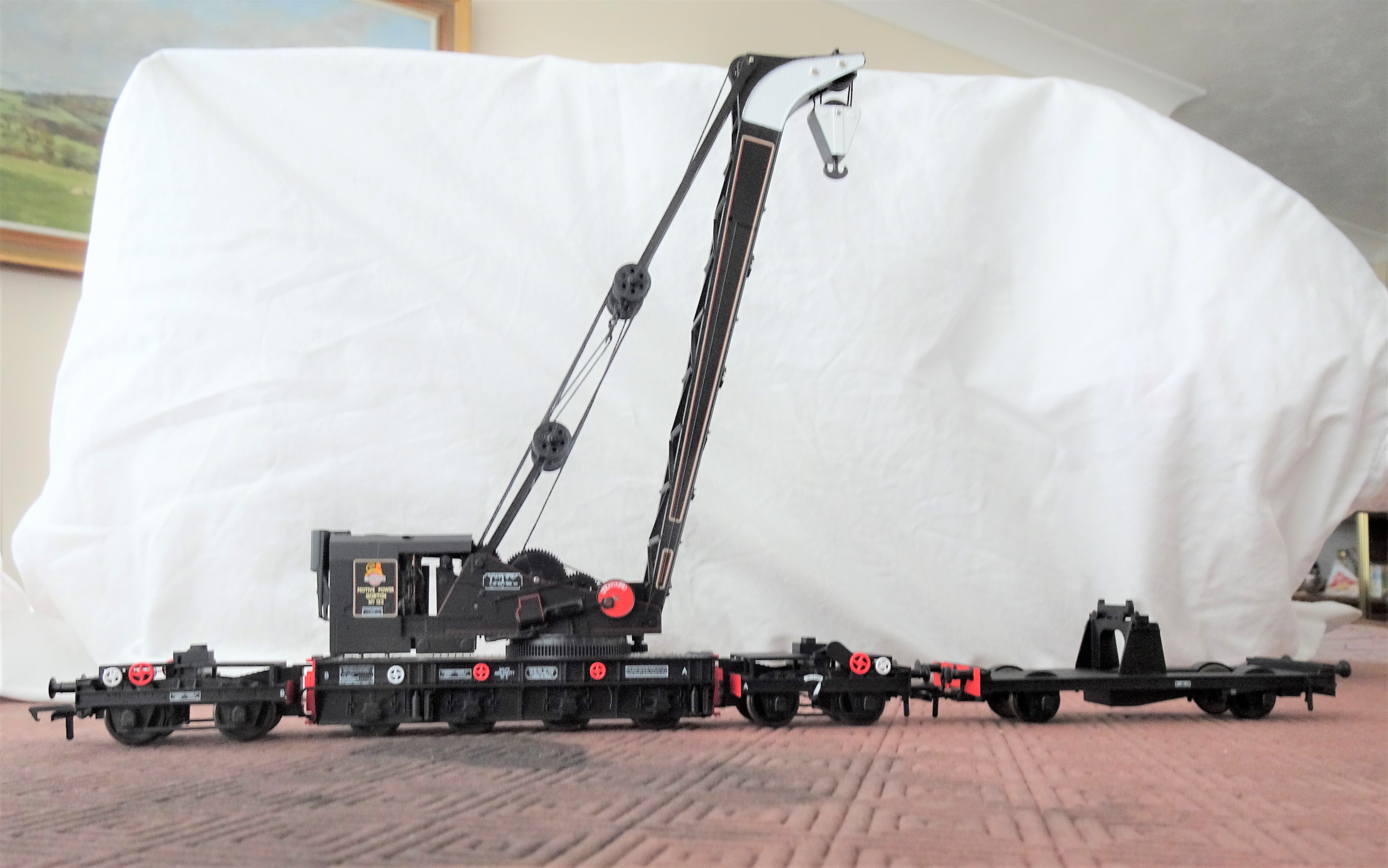
Prototype
The prototypes originate from the early years of the last world war and were initiated by the British Government; in part in anticipation of a lot of emergency repairs being required following enemy action and also for use on the continent once a toehold had been achieved. Initially a total of six were made, going to the SR and GWR but subsequently a further order of nine were made, mostly for the military but with a couple for the LNER and another for the SR. The example I bought being from the latter batch, being initially based in Gorton on the ex GCR system.

There were detail differences, with many of the railway company vehicles utilising standard components from their eventual owners. The valve chests for the cylinders moved to the exterior in the later batches and the operation of the loading of the relieving bogies became hydraulic latterly. The biggest changes, however, related to the match wagons where there was both variety of arrangements of tool boxes at the time of building and generations of modifications thereafter.

The cranes lasted until the mid 1980’s and a number of them survive in preservation, so if you want to see the real thing you might want to head to the Midhants Railway (on which the prototype photographs were taken and reproduced with kind permission of Carl Watson), the Bluebell Railway, the Great Central Railway, the North Yorkshire Moors Railway or the Swanage Railway. Below is a link to a video of the Midhants crane in action:
Model
The first thing you notice with the model is that it is some way from the toy train end of the model train market. The prototype is smothered in detail; with the fine bracing between the sides of the jib, the gear trains, axleboxes and flywheels all being a bit out of the ordinary for the ready to run market. Bachmann have had a really good go at this and for the greater part they have got it right – very few could model a crane as well as this. There are, however, several compromises made to enable them to be operable. This particularly shows at the bearing points at the head of the jib (exposed metal when they shouldn’t be visible) and on the crankpin nuts to the flywheels (way too big and hexagonal). I understand why this was done, but it sticks out to my eyes! Some touching in of paintwork will help (but not be perfect) and the replacement of nuts with something more subtle should be possible.

The detail is very delicate and the model needs to be handled very carefully as a result. Even the most careful (and I don’t count myself in this group) are unlikely to keep all the detail in place on any model that does not merely sit in the display cabinet. With a recommended retail price of £250, substantially more than any other product that is not filled with motors & electronics, it is doubtful that too many will end up in the hands of children – maybe that is just as well!
The model I bought, the early BR model in black – Bachmann ref SKU: 38-802, has a match truck without tool boxes. This is correct for the specific crane post the early 1950s but what is not is the missing insides to the splashers. This seems to be a compromise to accommodate OO wheelsets without making the splashers excessively deep. It is easy enough to fill in the open spaces if you model in one of the wider gauges and it will make a big difference.

The painting and livery is particularly fine on the model. Even better there are some exquisitely delicate etched plates that can be applied on top of some of the plates. I suspect I see the shadow of Mr Hanson on them.
Options
It looks realistic to get P4 wheels into the crane underframe and definitely so for the runners/match wagon. I would, however, be concerned as to whether a four axle vehicle could survive all but perfect track in P4 and how many of us have that? I suspect that it will all be very tight too, so some pretty large radius curves would be needed if a P4 model can get around them. Of course I will have a go, but it is not high on the to do list at the moment!

I think it is only a matter of time before someone looks at trying to motorise the crane. I think I will say good luck to them! Getting micromotors in might be possible for at least movement along the track but that still leaves slewing of the crane deck, raising of the jib and raising of the hook to go – getting another three in looks pretty difficult to me! The model does include internal hand operated mechanisms for the latter two movements – there are access panels that pop out to reveal a socket to receive a hand wheel. Thus, it is realistic to stage scenes, but not (in my eyes anyway – I really do look forward to someone having a go!) to make a fully operating model.

What is a must though is to add the paraphernalia of clutter the real cranes acquired in operation. Photographs show that they typically attracted lumber sections, jacks, chains and tarpaulins as if they were magnets. Cranes, not being front line stock in the public eye, tended not to suffer repaints very frequently and as they stood outside, they did weather and pick up corrosion spots. So any self respecting modeller needs to do something about how clean they look.
Although there is a very long in the tooth model crane from Hornby, it is somewhat of an uncomfortable marriage of several different cranes (the really old Hornby Doublo diecast version is better but quite crude), so does not cut the mustard. There are a limited number of kits for other cranes – notably the D&S Models Cowen Sheldon 15 ton breakdown crane (an example of one might grace these pages eventually!) but these are full on kits. Thus Bachmanns cranes are not only attractive models in their own right but they have a field fairly clear of competitors.

If you want the book on the prototype you need volume 2 of my father’s book – at present it is out of print but it is hoped with a bit of pressure on the publishers, Crecy, they can be persuaded to do a further print run.
The Bachmann crane is presently available in an SR livery, a GWR livery and then a pair of BR liveries – the 1950s livery shown above and a later gulf red livery. An example of the latter is below:

Seasons Greetings
Compliments of the season to you all and picture of Rudolf battling through the snow to deliver all the Christmas packages – well sort of!

I suspect this was taken near Altnabreac in 1895 as there are a series of photographs from there t this time, others of which I have posted before. The photograph is in the NRM’s collection but given its date will be out of copyright,.
Slips, Moans and the Third Way
A while back I outlined the struggle (that may have been largely in my head!) with wiring the single slip into the MPD. After some frantic reappraisal of this as the layout was being set up at Scaleforum (thanks Chris!), it was fully operational.
Given this is a further blog post on this slip, you can tell there is a but……….. In this case it was that route setting the turnout such that it was electrically correct was not intuitive. The difficulty lay in the straight through route – to set it electrically for the route through on the main required a different arrangement of the switches to that for the straight run from the loop to the MPD. This was even though the physical route setting could be exactly the same, so it become quite confusing! Not having a power district breaker meant that the layout locked down rather too frequently as a result.
Although I don’t see it myself, the guys think that one of my main operating crew has a bit of a reputation for being a moaner when things aren’t as easy as they could be…… With this in mind, it is clear that I have to do something about this to keep the peace. In addition to the use of LED route identification lights on the control panel, I have found a third way of powering the crossings on the slip. Its this
This is a frog juicer (apologies for the Americanism!) and is simply a device that detects a short-circuit when a vehicle hits the crossing. Instead of tripping out (as a power district breaker would), it swaps the polarity. This happens faster than a circuit breaker can trip or the locomotive motor react so can be relied upon to switch the crossing without any visible effect on operation.
The net impact of this is that my slip only needs to be set for the route that is being used. The crossings will not be changed by this route setting, instead as the first wheel touches each crossing it gets switched to the correct polarity.


